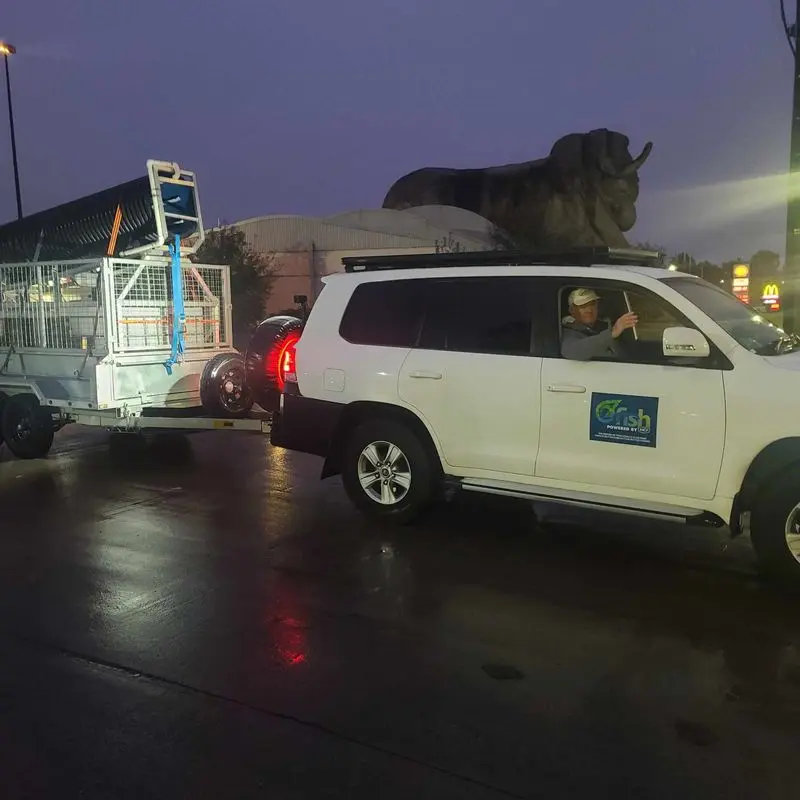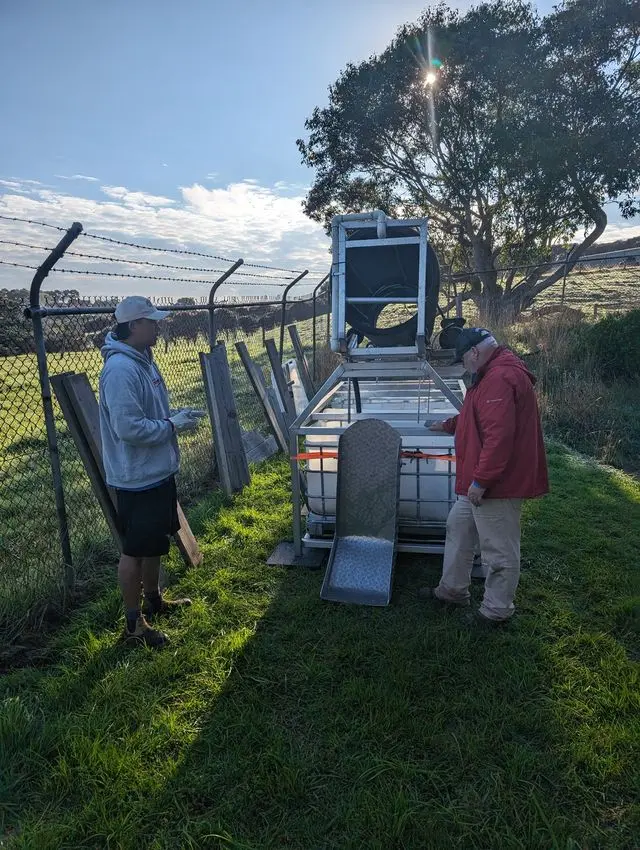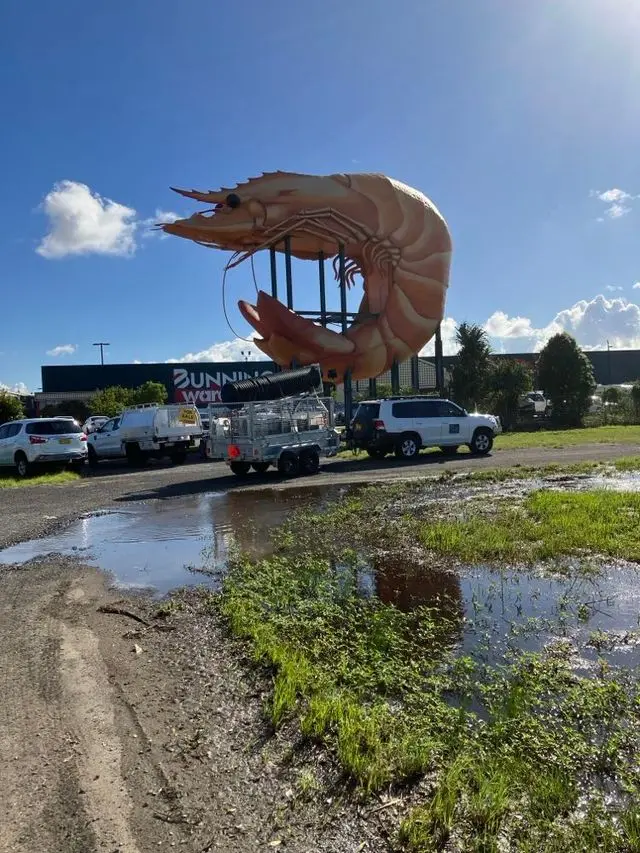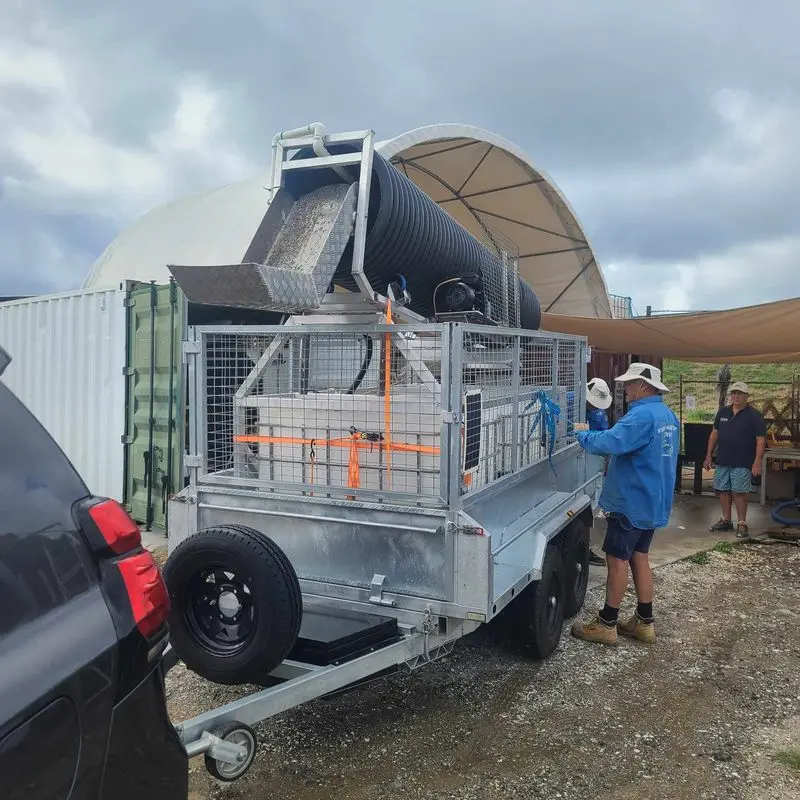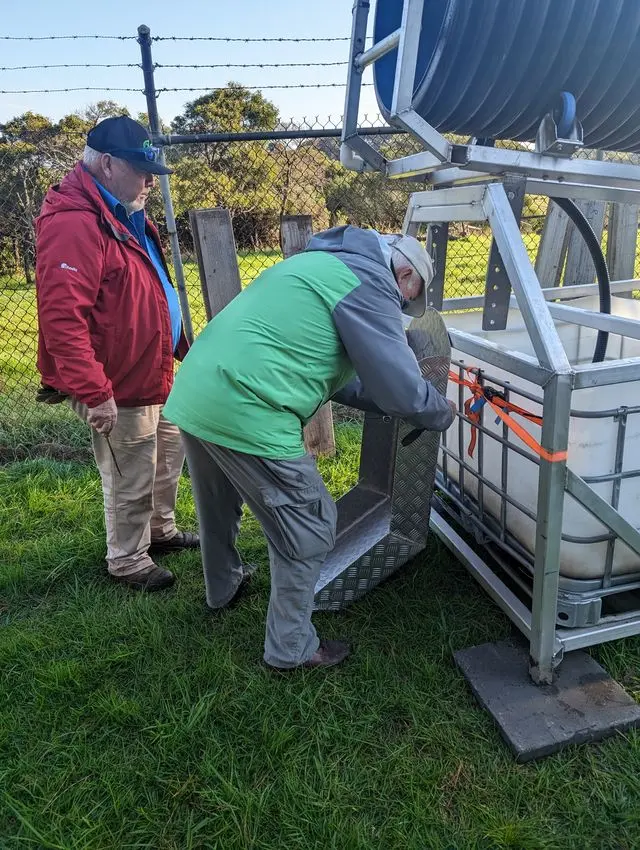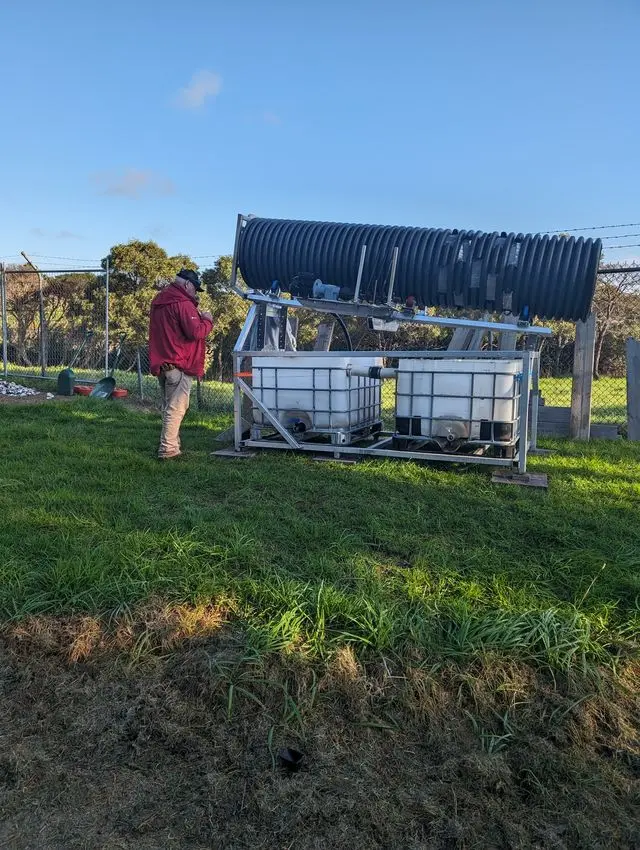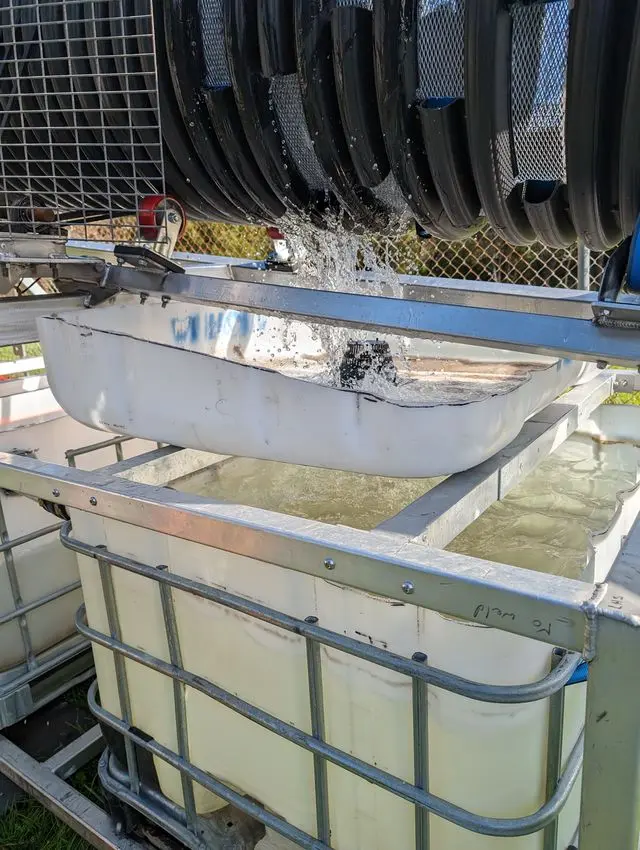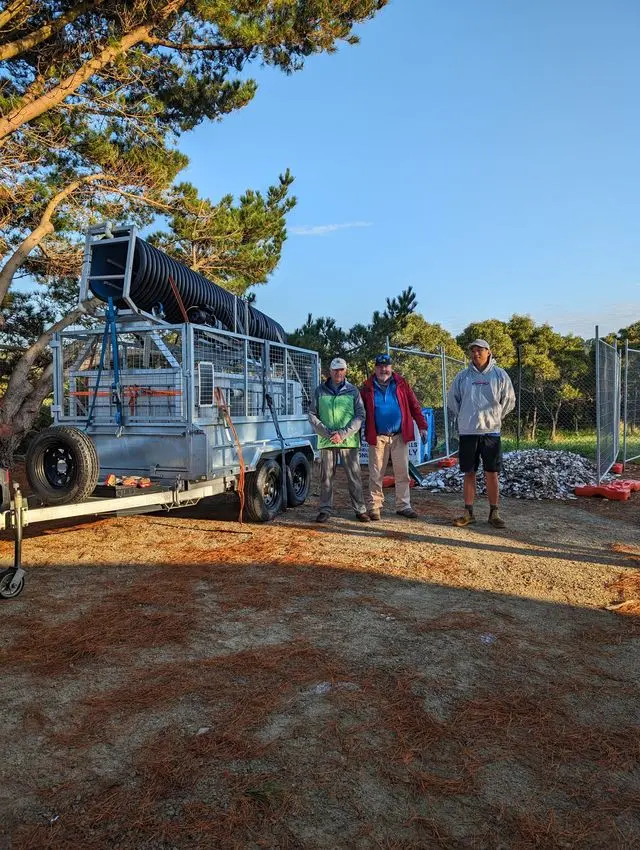How an innovative machine is transforming shell recycling
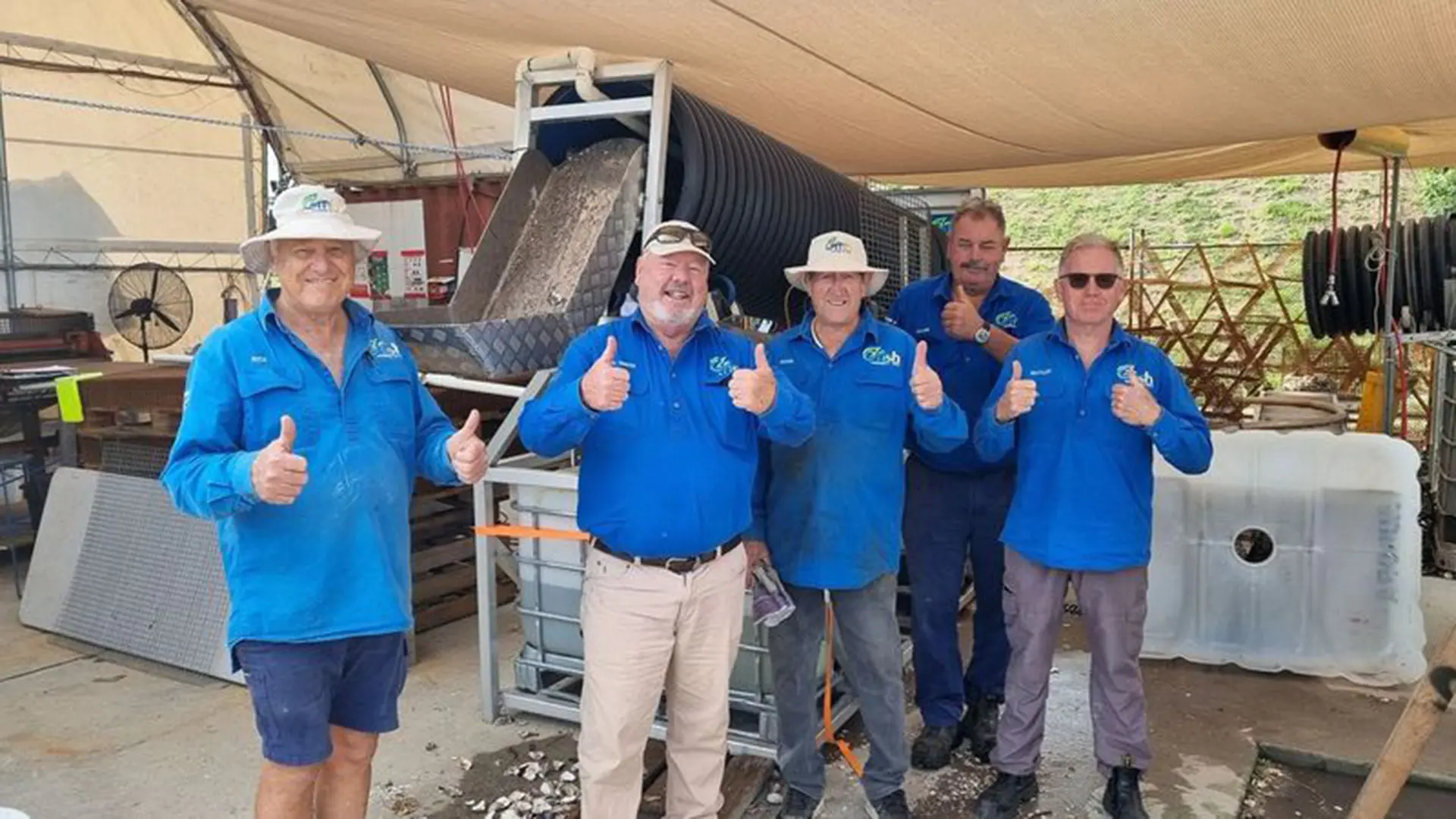
Creating oyster reefs is a tricky business and often requires collaboration between communities, businesses and volunteers. Some of these hardworking individuals recently transported a custom-built shell-washing machine, 3600 kilometres from Moreton Bay in Queensland to Victoria to support the expansion of community-driven shellfish restoration.
In one quiet area of Moreton Bay hidden in the back roads, a team of dedicated volunteers keeps OzFish’s Shellfish Recycling Centre running like a well-oiled machine. And when I say well-oiled machine, these entrepreneurs have engineered mechanical marvels to support some of the laborious behind-the-scenes tasks. Their passion fuels a remarkable process that breathes new life into used oyster shells, turning waste into invaluable structure for restoring marine habitats.
In Victoria, the OzFish crew is making waves of their own with Shellsavers, a new shellfish restoration project. Teaming up with Mornington Peninsula Shire and the local community, this initiative will give new life to shells that would otherwise end up in landfill. Instead of getting tossed aside, the discarded oyster shells will play a vital role in restoring lost shellfish reefs around Port Phillip and Western Port Bays.
But how does shell recycling work, exactly? It’s a meticulous journey. Each week, shells are collected from restaurants, wineries and seafood wholesalers, followed by a 9 months-long quarantine and sterilisation process at the Flinders recycling site. Here, they’re prepped for their grand return to the sea. However, before they reach their new home, they need to be thoroughly washed to ensure no nasties are introduced to the reef ecosystem.
The mighty task of washing literal tons of shell to remove any lingering dirt and contaminates originally fell on the hardworking volunteers. Scrubbing away caked-on crud by hand is a dirty job. Yet, thanks to the brilliant innovators in Queensland by OzFish volunteers, a game-changing device was engineered – introducing “Wilma” the shell-washing machine, now in charge of the cleaning responsibilities in Victoria. Wilma was custom-built for the specific requirements of the Shell Savers project. Designed to be portable – she can fit on a trailer and run off a generator, making it easy to transport her to different project sites as needed.
The machine streamlines the shell-washing process by feeding shells into a large tube, where they are tumbled down a cylinder with fresh water. The tube features small sieving holes that allow debris to fall through, leaving clean shells to emerge at the other end. The water is then recycled, allowing the process to start again.
Graham Toms and Dave Smith, committed members of the OzFish Central Moreton Bay Chapter, ensured Wilma’s safe journey to her new home base in Victoria. They formed the Wilma Traveling Team and documented the journey, covering over 3600 kilometres! Dave described it as “six days, two hours, and a few minutes” of travel time. Graham, also known as GT, took on the role of chief navigator, successfully following the directions to “Keep the ocean on the left” from Queensland to Victoria. In the end, it was a successful trip as they accomplished their goal of safely transporting Wilma to the Flinders shell recycling site.
Dave reflected on the experience, emphasising the significance of the innovative machine and its potential impact on the broader shellfish revolution program with OzFish.
“It’s a game changer for them; this will give them the drive to get going,” said Dave.
“And we’ve done something more than that, we’ve proven the value of what we do here at Moreton Bay.
“We’ve built a model for what could be a really important step in the evolution of community driven shellfish reef restoration in Australia – we’ve got a model for a mobile unit,” said Dave.
The collaboration between Moreton Bay and Victorian OzFishers is a testament to what’s possible when like-minded individuals join forces. The Moreton Bay volunteers shared their shellfish reef restoration passion and technical know-how with their Victorian counterparts.
With Wilma’s assistance, the shells can be more efficiently returned to Port Phillip and Western Port Bays to restore the fragmented reef habitat. As the reefs are revitalised, fish populations will return, providing better recreational fishing opportunities for generations to come.

